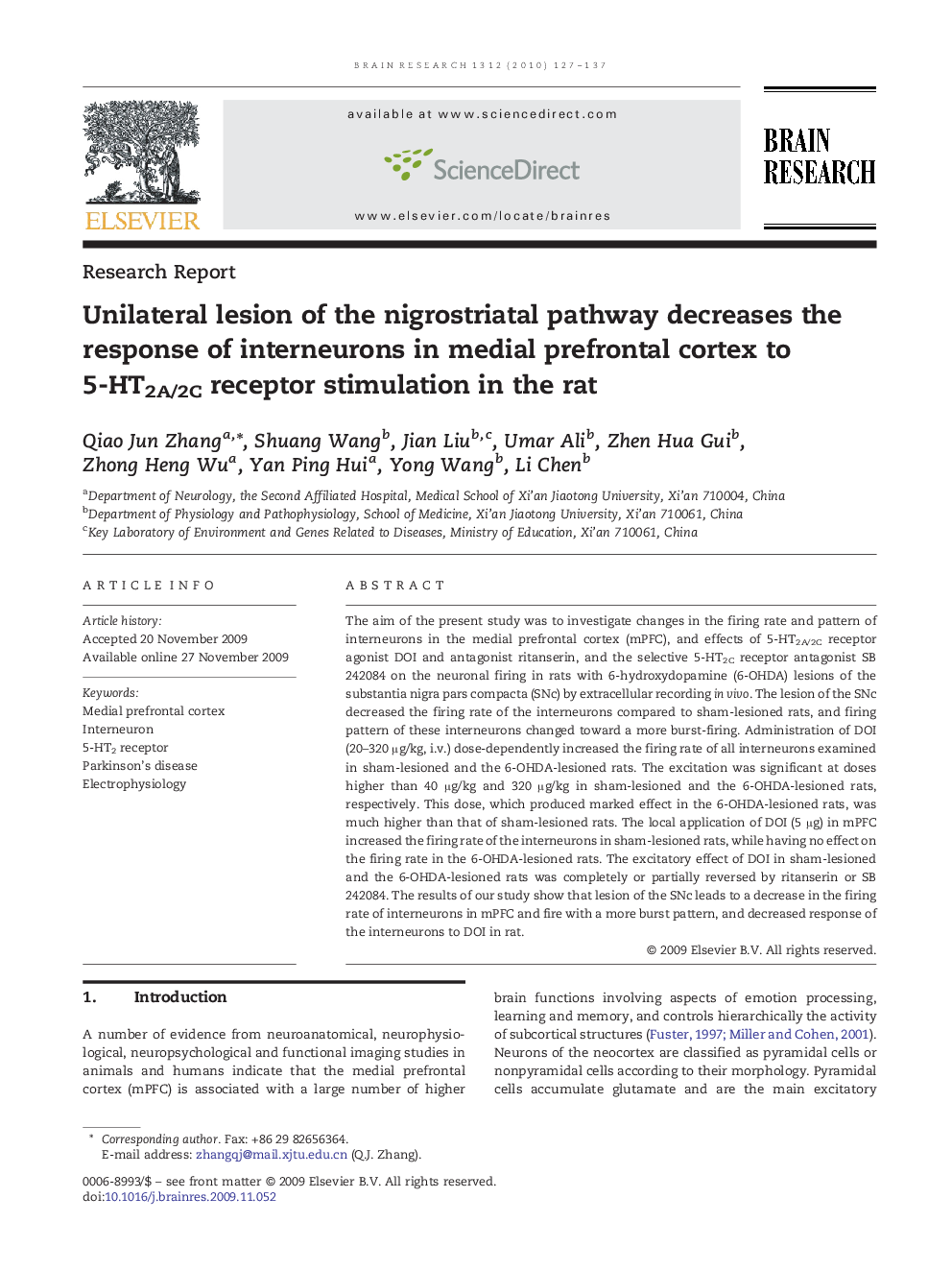| Article ID | Journal | Published Year | Pages | File Type |
|---|---|---|---|---|
| 4327511 | Brain Research | 2010 | 11 Pages |
The aim of the present study was to investigate changes in the firing rate and pattern of interneurons in the medial prefrontal cortex (mPFC), and effects of 5-HT2A/2C receptor agonist DOI and antagonist ritanserin, and the selective 5-HT2C receptor antagonist SB 242084 on the neuronal firing in rats with 6-hydroxydopamine (6-OHDA) lesions of the substantia nigra pars compacta (SNc) by extracellular recording in vivo. The lesion of the SNc decreased the firing rate of the interneurons compared to sham-lesioned rats, and firing pattern of these interneurons changed toward a more burst-firing. Administration of DOI (20–320 μg/kg, i.v.) dose-dependently increased the firing rate of all interneurons examined in sham-lesioned and the 6-OHDA-lesioned rats. The excitation was significant at doses higher than 40 μg/kg and 320 μg/kg in sham-lesioned and the 6-OHDA-lesioned rats, respectively. This dose, which produced marked effect in the 6-OHDA-lesioned rats, was much higher than that of sham-lesioned rats. The local application of DOI (5 μg) in mPFC increased the firing rate of the interneurons in sham-lesioned rats, while having no effect on the firing rate in the 6-OHDA-lesioned rats. The excitatory effect of DOI in sham-lesioned and the 6-OHDA-lesioned rats was completely or partially reversed by ritanserin or SB 242084. The results of our study show that lesion of the SNc leads to a decrease in the firing rate of interneurons in mPFC and fire with a more burst pattern, and decreased response of the interneurons to DOI in rat.
